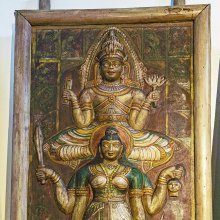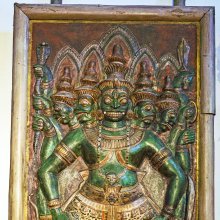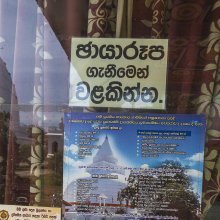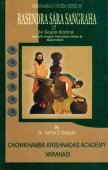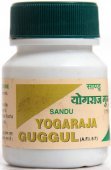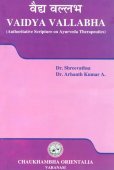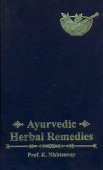Roga: 32 definitions
Introduction:
Roga means something in Buddhism, Pali, Hinduism, Sanskrit, Jainism, Prakrit, Marathi, Hindi, biology. If you want to know the exact meaning, history, etymology or English translation of this term then check out the descriptions on this page. Add your comment or reference to a book if you want to contribute to this summary article.
Alternative spellings of this word include Rog.
Images (photo gallery)
In Hinduism
Purana and Itihasa (epic history)
Source: archive.org: Shiva Purana - English TranslationRoga (रोग) refers to “ailments”, which one is able to drive away (uccāṭa) through the worship of Śiva, according to the Śivapurāṇa 2.1.14:—“[...] the worship with Japā flowers (China rose) brings about the death of enemies (śatrumṛtyu). Karavīra flowers drive away all ailments (roga-uccāṭa)”.
Source: Cologne Digital Sanskrit Dictionaries: The Purana IndexRoga (रोग).—To be worshipped in housebuilding and palace building.*
- * Matsya-purāṇa 253. 26; 268. 17.

The Purana (पुराण, purāṇas) refers to Sanskrit literature preserving ancient India’s vast cultural history, including historical legends, religious ceremonies, various arts and sciences. The eighteen mahapuranas total over 400,000 shlokas (metrical couplets) and date to at least several centuries BCE.
Ayurveda (science of life)
Dietetics and Culinary Art (such as household cooking)
Source: Shodhganga: Dietetics and culinary art in ancient and medieval IndiaRoga (रोग) or Rogacatuṣka refers to one of the seven subsections of the Sūtrasthāna of the Carakasaṃhitā which enjoys a prime position among Ayurvedic treatises and is written in the form of advices of the sage Ātreya to the sage Agniveśa. The Carakasaṃhitā contains eight sections [viz., sūtrasthāna]. Sūtrasthāna contains 30 chapters. Of them the first 28 chapters are divided into seven subsections namely catuṣakas [viz., roga-catuṣka].
Unclassified Ayurveda definitions
Source: gurumukhi.ru: Ayurveda glossary of termsRoga (रोग):—Discomfort; pain; Disease

Āyurveda (आयुर्वेद, ayurveda) is a branch of Indian science dealing with medicine, herbalism, taxology, anatomy, surgery, alchemy and related topics. Traditional practice of Āyurveda in ancient India dates back to at least the first millenium BC. Literature is commonly written in Sanskrit using various poetic metres.
Jyotisha (astronomy and astrology)
Source: Wisdom Library: Brihat Samhita by VarahamihiraRoga (रोग) (Cf. Ruj) refers to “facial disease”, according to the Bṛhatsaṃhitā (chapter 5), an encyclopedic Sanskrit work written by Varāhamihira mainly focusing on the science of ancient Indian astronomy astronomy (Jyotiṣa).—Accordingly, “If the lunar eclipse should terminate at the south-eastern point of the disc, the termination is technically known as dakṣiṇa-hanu (right jaw): crops will perish; facial disease [i.e., mukha-ruj] will afflict mankind; princes will suffer; and there will be good rain. If the lunar eclipse should terminate at the north-eastern point of the disc, the termination is known as vāma-hanu (left jaw): the king’s son will be afflicted with fears; there will be facial disease [i.e., mukha-roga] and wars, but prosperity over the whole land”

Jyotisha (ज्योतिष, jyotiṣa or jyotish) refers to ‘astronomy’ or “Vedic astrology” and represents the fifth of the six Vedangas (additional sciences to be studied along with the Vedas). Jyotisha concerns itself with the study and prediction of the movements of celestial bodies, in order to calculate the auspicious time for rituals and ceremonies.
Kavya (poetry)
Source: Brill: Śaivism and the Tantric Traditions (kavya)Roga (रोग) refers to “disease”, according to Kālidāsa’s Raghuvaṃśa verse 19.54.—Accordingly: “The ministers joined by the chaplain who knew the last rites placed him on the pyre in secret in the palace garden, under the pretext of a ceremony that averts disease (roga-śānti)”.

Kavya (काव्य, kavya) refers to Sanskrit poetry, a popular ancient Indian tradition of literature. There have been many Sanskrit poets over the ages, hailing from ancient India and beyond. This topic includes mahakavya, or ‘epic poetry’ and natya, or ‘dramatic poetry’.
Vastushastra (architecture)
Source: Brill: Śaivism and the Tantric Traditions (architecture)1) Roga (रोग) refers to one of the deities to be installed in the ground plan for the construction of houses, according to the Bṛhatkālottara, chapter 112 (the vāstuyāga-paṭala).—The plan for the construction is always in the form of a square. That square is divided into a grid of cells (padas). [...] Once these padas have been laid out, deities [e.g., Roga] are installed in them. In the most common pattern 45 deities are installed.
Roga as a doorway deity is associated with the Nakṣatra called Tiṣya and the consequence is roga. [...] The Mayasaṃgraha (verse 5.156-187) describes a design for a 9-by-9-part pura, a residential complex for a community and its lead figure. [...] This record lists a place for tools at Roga (ruji).
2) Roga (रोग) refers to “disease” which is specified as the consequence of a doorway (dvāraphala) at Pāpayakṣman (one of the peripheral padas of the 9 by 9 deity map), according to the Devyāmata (chapter 105).—Accordingly, [while describing the consequences of a doorway]—“[...] There is loss of wealth at Śoṣa and disease at Pāpayakṣman (roga—rogaḥ syāt pāpayakṣmaṇi). Eight deities have been listed, in the house facing west. Those facing north are listed next, in sequence, from the northwest on. At Roga is bondage. At Nāga (Vāsuki) is an enemy. [...]

Vastushastra (वास्तुशास्त्र, vāstuśāstra) refers to the ancient Indian science (shastra) of architecture (vastu), dealing with topics such architecture, sculpture, town-building, fort building and various other constructions. Vastu also deals with the philosophy of the architectural relation with the cosmic universe.
Pancaratra (worship of Nārāyaṇa)
Source: University of Vienna: Sudarśana's Worship at the Royal Court According to the AhirbudhnyasaṃhitāRoga (रोग) refers to “illnesses”, according to the Ahirbudhnyasaṃhitā, belonging to the Pāñcarātra tradition which deals with theology, rituals, iconography, narrative mythology and others.—Accordingly, “[...] [The demons born of] the aggressive magic of [his] enemies, having failed to take hold of him, frightened will possess the performer [of the ritual], like a river[’s fury] blocked by a mountain. Droughts will end and enemies will run away. In his kingdom there will not be dangers in the form of untimely deaths, wild animals, beasts of prey, thieves, illnesses (roga) etc. and strength shall reside in his lineage”.

Pancaratra (पाञ्चरात्र, pāñcarātra) represents a tradition of Hinduism where Narayana is revered and worshipped. Closeley related to Vaishnavism, the Pancaratra literature includes various Agamas and tantras incorporating many Vaishnava philosophies.
Sports, Arts and Entertainment (wordly enjoyments)
Source: archive.org: Syainika Sastra of Rudradeva with English Translation (art)Roga (रोग) refers to the “diseases” (of Hawks), according to the Śyainika-śāstra: a Sanskrit treatise dealing with the divisions and benefits of Hunting and Hawking, written by Rājā Rudradeva (or Candradeva) in possibly the 13th century.—Accordingly, [while discussing the importance of hawks]: “Now will be described the quantity of their food, the way of tending them at different seasons, their diseases (roga-parīkṣā) and their cure. Twenty-five ṭaṅkas of fresh flesh is quite enough for a Kuhī, Caraka, Vāja, and Vaharī. The Śaśādas should not be given less, for they are incapable of fasting. [...]”.

This section covers the skills and profiencies of the Kalas (“performing arts”) and Shastras (“sciences”) involving ancient Indian traditions of sports, games, arts, entertainment, love-making and other means of wordly enjoyments. Traditionally these topics were dealt with in Sanskrit treatises explaing the philosophy and the justification of enjoying the pleasures of the senses.
General definition (in Hinduism)
Source: Wisdom Library: HinduismRoga (रोग, “sickness”):—The charioteer of Yama, who resides in the city known as Saṃyaminī. Yama, the vedic God of death, represents the embodiment of Dharma. Yama rules over the kingdom of the dead and binds humankind according to the fruits of their karma.
In Buddhism
Theravada (major branch of Buddhism)
Source: Dhamma Dana: Pali English GlossaryM (Sickness).
Theravāda is a major branch of Buddhism having the the Pali canon (tipitaka) as their canonical literature, which includes the vinaya-pitaka (monastic rules), the sutta-pitaka (Buddhist sermons) and the abhidhamma-pitaka (philosophy and psychology).
Mahayana (major branch of Buddhism)
Source: Wisdom Library: Maha Prajnaparamita SastraRoga (रोग, “sickness”) refers to one of the eight kinds of contemplations (anupaśyanā) among the Buddha’s disciples, according to the 2nd century Mahāprajñāpāramitāśāstra (chapter XVI). Accordingly, “for them, everything is impermanent (anitya), suffering (duḥkha), empty (śūnya), egoless (anātmaka), like a sickness (roga), an ulcer (gaṇḍa), like an arrow (śalya) stuck in one’s body, like an agony (agha)”.

Mahayana (महायान, mahāyāna) is a major branch of Buddhism focusing on the path of a Bodhisattva (spiritual aspirants/ enlightened beings). Extant literature is vast and primarely composed in the Sanskrit language. There are many sūtras of which some of the earliest are the various Prajñāpāramitā sūtras.
Tibetan Buddhism (Vajrayana or tantric Buddhism)
Source: Wisdom Library: Tibetan BuddhismRoga (रोग) refers to a group of deities summoned by the Yamāntaka-mantra and mentioned as attending the teachings in the 6th century Mañjuśrīmūlakalpa: one of the largest Kriyā Tantras devoted to Mañjuśrī (the Bodhisattva of wisdom) representing an encyclopedia of knowledge primarily concerned with ritualistic elements in Buddhism. The teachings in this text originate from Mañjuśrī and were taught to and by Buddha Śākyamuni in the presence of a large audience (including Roga).
Source: Brill: Śaivism and the Tantric Traditions (tantric Buddhism)Roga (रोग) refers to “disease”, according to the Bhūśalyasūtrapātananimittavidhi section of Jagaddarpaṇa’s Ācāryakriyāsamuccaya, a text within Tantric Buddhism dealing with construction manual for monasteries etc.—Accordingly, “[...] If a frog croaks, there is danger of water in the [donor’s?] house. If smoke [is seen], there is distraction of mind. If a person suffering from a disease, a person of a lower [class], a person suffering from leprosy, a deranged person, and a woman are seen, then it causes disease (roga-bhāj—rogabhāk)”.

Tibetan Buddhism includes schools such as Nyingma, Kadampa, Kagyu and Gelug. Their primary canon of literature is divided in two broad categories: The Kangyur, which consists of Buddha’s words, and the Tengyur, which includes commentaries from various sources. Esotericism and tantra techniques (vajrayāna) are collected indepently.
In Jainism
General definition (in Jainism)
Source: archive.org: TrisastisalakapurusacaritraRoga (रोग, “illness”) refers to one of the hardships (parīṣaha), or “series of trials hard to endure” according to the Triṣaṣṭiśalākāpuruṣacaritra 10.1 (Incarnation as Nandana). While practicing penance for a lac of years, Muni Nandana also endured a series of trials hard to endure (e.g., roga). Nandana is the name of a king as well as one of Mahāvīra’s previous births.
Source: The University of Sydney: A study of the Twelve ReflectionsRoga (रोग) refers to “infirmities”, according to the commentary on the 11th century Jñānārṇava (verse 2.1), a treatise on Jain Yoga in roughly 2200 Sanskrit verses composed by Śubhacandra.—Accordingly, “Is one not disturbed by [family] attachments? Is this body not cut down by diseases (com.—roga—‘infirmities’)? Does death not open its mouth? Do calamities not do harm every day? Are hells not dreadful? Are not sensual pleasures deceiving like a dream? Because of which, having discarded one’s own benefit, you have a desire for the world which is like a city of Kiṃnaras”.
Synonyms: Rujā, Āmaya.

Jainism is an Indian religion of Dharma whose doctrine revolves around harmlessness (ahimsa) towards every living being. The two major branches (Digambara and Svetambara) of Jainism stimulate self-control (or, shramana, ‘self-reliance’) and spiritual development through a path of peace for the soul to progess to the ultimate goal.
Biology (plants and animals)
Source: Google Books: CRC World Dictionary (Regional names)Roga in India is the name of a plant defined with Saussurea costus in various botanical sources. This page contains potential references in Ayurveda, modern medicine, and other folk traditions or local practices It has the synonym Aplotaxis lappa Decaisne (among others).
Example references for further research on medicinal uses or toxicity (see latin names for full list):
· Archives de Botanique (1833)
· Linnaea (1846)
· Phytomedicine (2002)
· CIS Chromosome Inform. Serv. (1993)
· Annals and Magazine of Natural History (1841)
· Dict. Sci. Nat. (1827)
If you are looking for specific details regarding Roga, for example side effects, diet and recipes, chemical composition, pregnancy safety, health benefits, extract dosage, have a look at these references.

This sections includes definitions from the five kingdoms of living things: Animals, Plants, Fungi, Protists and Monera. It will include both the official binomial nomenclature (scientific names usually in Latin) as well as regional spellings and variants.
Languages of India and abroad
Pali-English dictionary
Source: BuddhaSasana: Concise Pali-English Dictionaryroga : (m.) disease; illness.
Source: Sutta: The Pali Text Society's Pali-English DictionaryRoga, (Vedic roga: ruj (see rujati), cp. Sk. rujā breakage, illness) illness, disease.—The definition of roga at J. II, 437 is “roga rujana-sabhāvattaṃ. ” There are many diff. enumerations of rogas and sets of standard combinations, of which the foll. may be mentioned. At sn 311 (cp. D. III, 75) it is said that in old times there were only 3 diseases, viz. icchā, anasanaṃ, jarā, which gradually, through slaughtering of animals, increased to 98. Bdhgh at SnA 324 hints at these 98 with “cakkhu-rog’adinā-bhedena. ” Beginning with this (cakkhuroga affection of the eye) we have a list of 34 rogas at Nd1 13 (under pākaṭa-parissayā or open dangers=Nd1 360= Nd2 420) & Nd2 3041 B, viz. cakkhu° & the other 4 senses, sīsa°, kaṇṇa°, mukha°, danta°; kāsa, sāsa, pināsa, ḍāha, jara; kucchiroga, mucchā, pakkhandikā, sūlā, visūcikā; kuṭṭhaṃ, gaṇḍo, kilāso, soso, apamāro; daddu, kaṇḍu, kacchu, rakhasā, vitacchikā, lohita‹-› pittaṃ, madhumeho, aṃsā, piḷakā, bhagandalā. This list is followed by list of 10 ābādhas & under “dukkha” goes on with var. other “ills, ” which however do not make up the number 98. The same list is found at A. V, 110. The 10 ābādhas (Nd2 3041 C.) occur at A. II, 87 & Miln. 308 (as āgantuka-rogā). The 4 “rogas” of the Sun (miln 273, cp. Vin. II, 295) are: abbha, mahikā, megha, Rāhu.—Another mention of roga together with plagues which attack the corn in the field is given at J. V, 401, viz. visa-vāta; mūsika-salabha-suka-pāṇaka; setaṭṭhika-roga etc., i.e. hurtful winds, mice, moths & parrots, mildew.—The combination roga, gaṇḍa, salla is sometimes found, e.g. M. II, 230; Vism. 335. Of other single rogas we mention: kucchi° (stomach-ache) J. I, 243; ahivātaka° Vin. I, 78; J. II, 79; IV, 200; DhA. I, 231; paṇḍu° jaundice Vin. I, 206; J. II, 102; DhA. I, 25; tiṇapupphaka° hay-fever Miln. 216.—See also ātaṅka & ābādha. On roga in similes see J. P. T. S. 1907, 130. ‹-› D. I, 11, 73; III, 182; S. III, 32; IV, 64; A. II, 128, 142 sq.; IV, 289, ; Nd1 486; Vism. 236 (as cause of death), 512 (in simile); VbhA. 88 (in sim. of dukkha etc.); ThA. 288; VvA. 6 (rogena phuṭṭha), 75 (sarīre r. uppajji); PvA. 86 (kacchu°), 212 (rogena abhibhūta).—Opp. aroga health: see sep.

Pali is the language of the Tipiṭaka, which is the sacred canon of Theravāda Buddhism and contains much of the Buddha’s speech. Closeley related to Sanskrit, both languages are used interchangeably between religions.
Marathi-English dictionary
Source: DDSA: The Molesworth Marathi and English Dictionaryrōga (रोग).—m (S) Disease or disorder; illness in general organic or functional. 2 A disease or a disorder. 3 A diseased part (of fruits, flowers &c.) Ex. agastyācē phulāntalī madhalī kāḍī tō rōga āhē tī kāḍhūna ṭāka. 4 Anything viewed as causing disease. Ex. hē dhaḍadhaḍīta kiḍakē tāndūḷa disatāta āṇi paikā kharcūna hā rōga kaśālā āṇalā. 5 Vexation at another's success or good fortune. 6 Applied to any person or beast viewed as hateful, nasty, troublesome, vile.
Source: DDSA: The Aryabhusan school dictionary, Marathi-Englishrōga (रोग).—m Disease. Vexation at another's success.
Marathi is an Indo-European language having over 70 million native speakers people in (predominantly) Maharashtra India. Marathi, like many other Indo-Aryan languages, evolved from early forms of Prakrit, which itself is a subset of Sanskrit, one of the most ancient languages of the world.
Sanskrit dictionary
Source: DDSA: The practical Sanskrit-English dictionaryRoga (रोग).—[ruj-ghañ]
1) A disease, sickness, malady, distemper, infirmity; सन्तापयन्ति कमपथ्यभुजं न रोगाः (santāpayanti kamapathyabhujaṃ na rogāḥ) H.3.11; भोगे रोगभयम् (bhoge rogabhayam) Bhartṛhari 3.35.
2) A diseased spot.
3) Costus Speciosus (Mar. koṣṭha).
Derivable forms: rogaḥ (रोगः).
Source: Cologne Digital Sanskrit Dictionaries: Shabda-Sagara Sanskrit-English DictionaryRoga (रोग).—m.
(-gaḥ) 1. Sickness, disease in general, or a disease. 2. A sort of Costus, (C. speciosus.) E. ruj to be or make sick, aff. ghañ .
Source: Cologne Digital Sanskrit Dictionaries: Benfey Sanskrit-English DictionaryRoga (रोग).—i. e. ruj + a, I. m. 1. Disease, [Pañcatantra] iii. [distich] 244. 2. A sort of Costus, C. speciosus.
Source: Cologne Digital Sanskrit Dictionaries: Cappeller Sanskrit-English DictionaryRoga (रोग).—[masculine] infirmity, disease; sore place.
Source: Cologne Digital Sanskrit Dictionaries: Monier-Williams Sanskrit-English Dictionary1) Roga (रोग):—m. (√1. ruj) ‘breaking up of strength’, disease, infirmity, sickness (also personified as an evil demon), [Atharva-veda] etc. etc.
2) a diseased spot, [Suśruta]
3) Costus Speciosus or Arabicus, [cf. Lexicographers, esp. such as amarasiṃha, halāyudha, hemacandra, etc.]
Source: Cologne Digital Sanskrit Dictionaries: Yates Sanskrit-English DictionaryRoga (रोग):—(gaḥ) 1. m. Sickness, disease; Costus speciosus.
[Sanskrit to German]
Sanskrit, also spelled संस्कृतम् (saṃskṛtam), is an ancient language of India commonly seen as the grandmother of the Indo-European language family (even English!). Closely allied with Prakrit and Pali, Sanskrit is more exhaustive in both grammar and terms and has the most extensive collection of literature in the world, greatly surpassing its sister-languages Greek and Latin.
Hindi dictionary
Source: DDSA: A practical Hindi-English dictionaryRoga (रोग) [Also spelled rog]:—(nm) a disease; illness, ailment, sickness; malady; affliction; ~[kara/kāraka/kārī] infectious, causing illness, sickening; ~[grasta] ailing; diseased, ill, sick; ~[nāśaka/hara/hārī] curative; cure; -[nidāna] diagnosis, pathogenesis; ~[nirodhī] prophylactic; ~[bhrama] hypochondria; ~[bhramī] hypochondriac; ~[mukti] cure; -[lakṣaṇa] symptom (of disease); ~[vāhaka] disease-carrier; —[kī jaḍa khāṃsī laḍāī kī jaḍa hāṃsī] jokes lie at the root of all conflicts as cough at the root of all physical ailments; —[pālanā] to knowingly own a malady; to develop an unhealthy habit.
...
Kannada-English dictionary
Source: Alar: Kannada-English corpusRōga (ರೋಗ):—[noun] departure from health; impairment of normal physiological of affect a part or all of an organism or of normal psychological function of a person; illness; malady; sickness; a disease.
Kannada is a Dravidian language (as opposed to the Indo-European language family) mainly spoken in the southwestern region of India.
Nepali dictionary
Source: unoes: Nepali-English DictionaryRoga (रोग):—n. disease; affection; ailment; sickness; illness; infirmity;
Nepali is the primary language of the Nepalese people counting almost 20 million native speakers. The country of Nepal is situated in the Himalaya mountain range to the north of India.
See also (Relevant definitions)
Starts with (+115): Roga Sutta, Roga-chettu, Rogabhaj, Rogabhavana, Rogabhaya, Rogabhu, Rogabhyagama, Rogacatushka, Rogachettu, Rogada, Rogadhisha, Rogadi, Rogadivarga, Rogadya, Rogagela, Rogaghna, Rogagrahi, Rogagrama, Rogagrast, Rogagrasta.
Ends with (+219): Adhyaroga, Adururoga, Agantujaroga, Ahivatakaroga, Akkhiroga, Akshiroga, Amgalamtiroga, Amturoga, Anaberoga, Angaroga, Antila Roga, Arishtaroga, Aroga, Arsharoga, Arshoroga, Asanaroga, Ashtamaharoga, Asyaroga, Atiroga, Aupasargikaroga.
Full-text (+488): Atiroga, Saroga, Rogaharin, Cakshuroga, Kshudraroga, Paparoga, Rogagrasta, Rogabhu, Rogaraja, Shiroroga, Rogashanti, Taimira, Kshayaroga, Rogin, Hridroga, Rogashantaka, Tamra, Arogata, Arshoroga, Aroga.
Relevant text
Search found 54 books and stories containing Roga, Rōga; (plurals include: Rogas, Rōgas). You can also click to the full overview containing English textual excerpts. Below are direct links for the most relevant articles:
Rig Veda (translation and commentary) (by H. H. Wilson)
Rig Veda 1.50.11 < [Sukta 50]
Jivanandana of Anandaraya Makhin (Study) (by G. D. Jayalakshmi)
Diseases and treatments related to skin < [Chapter 4 - Āyurvedic principles in Jīvanandana Nāṭaka]
Analysis of Śvāsa (Śvāsaroga) < [Chapter 6 - Dramatic aspects of the Jīvanandana Nāṭaka]
Medicines administered for different diseases < [Chapter 4 - Āyurvedic principles in Jīvanandana Nāṭaka]
Rasa Jala Nidhi, vol 4: Iatrochemistry (by Bhudeb Mookerjee)
Part 25 - Treatment of Udara-roga (22): Application of parpati < [Chapter VI - Diseases affecting the belly (udara-roga)]
Part 1 - Characteristics of Udara-roga (diseases affecting the belly) < [Chapter VI - Diseases affecting the belly (udara-roga)]
Part 15 - Treatment for enlargement of spleen and liver (14): Ganadhipa rasa < [Chapter VII - Enlargement of spleen (plihodara) and liver (yakridudara)]
The Garuda Purana (by Manmatha Nath Dutt)
Chapter CLXXXII - The Nidanam of Shlipadam (Elephantiasis) < [Dhanvantari Samhita]
Chapter CLXVIII - The Nidanam of Mukha-roga < [Dhanvantari Samhita]
Chapter CCXV - Various Recipes < [Dhanvantari Samhita]
Amarakoshodghatana of Kshirasvamin (study) (by A. Yamuna Devi)
Deviation from convention (Introduction) < [Chapter 6 - Grammatical Aspects]
Appendix III - Synonyms of Flora (Vanauṣadhi-varga)
Flora (5): Trees < [Chapter 5 - Aspects of Nature]
Atharvaveda and Charaka Samhita (by Laxmi Maji)
Treatment of Vilohita (Polypus) < [Chapter 3 - Diseases and Remedial measures (described in Atharvaveda)]
Treatment of Ear and Oral diseases < [Chapter 3 - Diseases and Remedial measures (described in Atharvaveda)]
Treatment of Śīrṣakti (headache) < [Chapter 3 - Diseases and Remedial measures (described in Atharvaveda)]
Related products
(+5 more products available)
